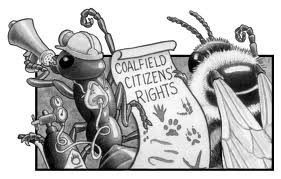 Where will the energy that runs modern societies come from? It is not an exaggeration to say that the fate of this planet hangs on the answer to this question.
Where will the energy that runs modern societies come from? It is not an exaggeration to say that the fate of this planet hangs on the answer to this question.
The news is mixed on this front. Here in the US, citizens’ movements against killer coal have been surprisingly successful. As Ted Nace explains in his crucial book Climate Hope, the US Energy Department’s drive to build more coal-fueled power plants has been rolled back through citizen action on a local and regional level. In 2007, Energy Department analyst Erik Shuster circulated a document which revealed that more than 150 coal-fired power plants were slated for construction in the coming years. Since then, grassroots movements have managed to block construction of over 2/3rds of these power plants.
The story in other parts of the world is not such a happy one. In particular, in rapidly industrializing countries such as China and India, development of coal power has proceeded quickly in recent years. Nace’s useful site Coalswarm tracks coal development around the world. Some of the world’s most populous countries, with sharply increasing, energy-hungry urban populations are looking to coal to power their vast emerging energy needs in coming years.
For all the gains in the US, in other words, the world as a whole has swung decisively in the wrong direction. It could also be argued that the struggle against coal in the US has been so successful because of the development of other polluting energy sources such as natural gas.
A fundamental question that underlies the issue of energy is who controls power generation. In many places, power companies have been privatized during the last few decades of neoliberal hegemony. The Transnational Institute has just made a powerful film on the privatization of public energy supplies available for public consumption:
Another key resource in thinking these questions of who controls power (in both senses of the term) is Kolya Abramsky’s  excellent book Sparking a Worldwide Energy Revolution. In his work, Abramsky underlines the various struggles among workers who produce energy in various parts of the world, as well as the efforts of citizen movements in rural areas and in the burgeoning megacities of the global South to gain access to clean and affordable sources of power. These struggles are life and death ones on a daily level for many people – think about the number of people who die from various respiratory ailments as a result of burning cheap coal and dung indoors in poor communities around the world.
excellent book Sparking a Worldwide Energy Revolution. In his work, Abramsky underlines the various struggles among workers who produce energy in various parts of the world, as well as the efforts of citizen movements in rural areas and in the burgeoning megacities of the global South to gain access to clean and affordable sources of power. These struggles are life and death ones on a daily level for many people – think about the number of people who die from various respiratory ailments as a result of burning cheap coal and dung indoors in poor communities around the world.
Such struggles also are key ones for the future of the planet as a whole. Popular democratic control of energy is the linchpin of the transition to a new and better world that lies on our doorstep. Gaining control of the energy commons by breaking our dependence on killer coal and other dirty fossil fuels is a key goal of the revolutionary movement that we must build.
Note: images in this post are from the Beehive Collective’s brilliant work The True Cost of Coal